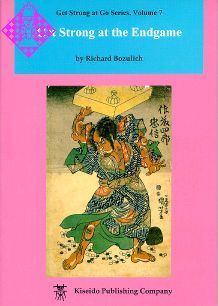Artikelnummer
LGBOZGSATE/GS07
Autor
Get Strong at the Endgame
K57 - Get Strong at Go Series, Vol. 7
216 Seiten, kartoniert, Kiseido, 2. Auflage 2016, Erstauflage 1997
Aus der Reihe »Get Strong at Go«
How do you win a won game?
How do you win a lost game?
Study the endgame! More specifically, study this book and you will really get strong at the endgame.
It would be an exaggeration to say that most games are decided in the endgame, but there is no question that a great many upsets are pulled off at this stage. Players often come out of the opening with a clear lead, only to see it dwindle away in the endgame. On the other hand, if your opening and middle game are not so strong, the surest way to stage an upset is to become a strong endgame player. You will also find that the key to winning handicap games with white is not necessarily to study handicap openings and josekis, but to get strong in the endgame.
The endgame is the most difficult part of the game to play well, but this book makes it easy. It starts out with a 42-problem test. Unless you're already strong in the endgame, expect to do badly, but after studying the 120 endgame-tesuji problems in Part Two and the 101 endgame-calculation problems in Part Three, you should have no trouble scoring close to 100% on this test. At that point you will be anxious to try out your newly developed skill with your go-playing friends, at your local go club, or on the Internet.
The book ends with 28 problems on 11x11 boards which illustrate the interplay between different-valued endgame moves in realistic situations. Studying these problems will help you understand when to forgo sente moves for gote moves, or, instead of playing a gote move, when to go on the initiative with a sente move.
It would be an exaggeration to say that most games are decided in the endgame, but there is no question that a great many upsets are pulled off at this stage. Players often come out of the opening with a clear lead, only to see it dwindle away in the endgame. The ability to win against large handicaps, where you will often end up with a bad opening result, relies more on endgame technique than on 'tricking' your opponent in the opening. In fact, the hallmark of strong players is their skill in the endgame. The endgame is the most difficult part of the game to play well; it requires hard thinking. You must accurately calculate many distinct positions throughout the board while taking into account the inter-relationships between them. Aji and the life and death of stones must also be considered. Every slip or miscalculation will cost you points and, in close games, these points can be the difference between victory and defeat.
One of the two most important skills in the endgame is the ability to calculate the value of a move. Since you will, in general, want to play bigger moves before smaller ones, being able to determine the size of various moves will go a long way toward increasing your endgame strength. In Part Three, you will find 101 problems where you are asked to calculate the value of basic endgame moves, such as various hane and connection moves made on the first, second, and third lines, and the value of endgame sequences that arise from commonly played josekis.
The other important endgame skill is knowing the basic endgame tesujis. After working your way through the 120 endgame tesuji problems in Part Two, I have no doubt that you will look at the endgame quite differently, as you might discover after trying to solve the 42 problems in Part One again. The 28 problems on 11x11 boards in Part Four illustrate the interplay between different-valued endgame moves in realistic situations. Studying these problems will help you understand when to forgo sente moves for gote moves, or, instead of playing a gote move, when to go on the initiative with a sente move.
This book is essentially a problem book and, as such, there is not much theoretical explanation. We recommend that the reader consult The Endgame by Tomoko Ogawa and James Davies.
Finally, I would like to thank Kano Yoshinori 9-dan for his advice and his permission to use 65 problems from his book Yose fiten ('Endgame Dictionary') in Part One and Part Four here.
Richard Bozulich, April 1997, preface
How do you win a lost game?
Study the endgame! More specifically, study this book and you will really get strong at the endgame.
It would be an exaggeration to say that most games are decided in the endgame, but there is no question that a great many upsets are pulled off at this stage. Players often come out of the opening with a clear lead, only to see it dwindle away in the endgame. On the other hand, if your opening and middle game are not so strong, the surest way to stage an upset is to become a strong endgame player. You will also find that the key to winning handicap games with white is not necessarily to study handicap openings and josekis, but to get strong in the endgame.
The endgame is the most difficult part of the game to play well, but this book makes it easy. It starts out with a 42-problem test. Unless you're already strong in the endgame, expect to do badly, but after studying the 120 endgame-tesuji problems in Part Two and the 101 endgame-calculation problems in Part Three, you should have no trouble scoring close to 100% on this test. At that point you will be anxious to try out your newly developed skill with your go-playing friends, at your local go club, or on the Internet.
The book ends with 28 problems on 11x11 boards which illustrate the interplay between different-valued endgame moves in realistic situations. Studying these problems will help you understand when to forgo sente moves for gote moves, or, instead of playing a gote move, when to go on the initiative with a sente move.
It would be an exaggeration to say that most games are decided in the endgame, but there is no question that a great many upsets are pulled off at this stage. Players often come out of the opening with a clear lead, only to see it dwindle away in the endgame. The ability to win against large handicaps, where you will often end up with a bad opening result, relies more on endgame technique than on 'tricking' your opponent in the opening. In fact, the hallmark of strong players is their skill in the endgame. The endgame is the most difficult part of the game to play well; it requires hard thinking. You must accurately calculate many distinct positions throughout the board while taking into account the inter-relationships between them. Aji and the life and death of stones must also be considered. Every slip or miscalculation will cost you points and, in close games, these points can be the difference between victory and defeat.
One of the two most important skills in the endgame is the ability to calculate the value of a move. Since you will, in general, want to play bigger moves before smaller ones, being able to determine the size of various moves will go a long way toward increasing your endgame strength. In Part Three, you will find 101 problems where you are asked to calculate the value of basic endgame moves, such as various hane and connection moves made on the first, second, and third lines, and the value of endgame sequences that arise from commonly played josekis.
The other important endgame skill is knowing the basic endgame tesujis. After working your way through the 120 endgame tesuji problems in Part Two, I have no doubt that you will look at the endgame quite differently, as you might discover after trying to solve the 42 problems in Part One again. The 28 problems on 11x11 boards in Part Four illustrate the interplay between different-valued endgame moves in realistic situations. Studying these problems will help you understand when to forgo sente moves for gote moves, or, instead of playing a gote move, when to go on the initiative with a sente move.
This book is essentially a problem book and, as such, there is not much theoretical explanation. We recommend that the reader consult The Endgame by Tomoko Ogawa and James Davies.
Finally, I would like to thank Kano Yoshinori 9-dan for his advice and his permission to use 65 problems from his book Yose fiten ('Endgame Dictionary') in Part One and Part Four here.
Richard Bozulich, April 1997, preface
| EAN | 9784906574575 |
|---|---|
| Gewicht | 260 g |
| Hersteller | Kiseido |
| Breite | 15 cm |
| Höhe | 21 cm |
| Medium | Buch |
| Erscheinungsjahr | 2016 |
| Autor | Richard Bozulich |
| Reihe | Get Strong at Go |
| Sprache | Englisch |
| Auflage | 2 |
| ISBN-13 | 978-4-906574-57-5 |
| Jahr der Erstauflage | 1997 |
| Seiten | 216 |
| Einband | kartoniert |
| Name | Kiseido Publishing Company |
|---|
iv Preface
v Some Important Terms and Concepts
Part One
001 How Strong Is Your Endgame? -42 Problems
Part Two
010 Endgame Tesujis -120 Problems
Part Three
092 Endgame Calculations -101 Problems
150 Answers to Problems 1 to 42
Part Four
168 Practical Endgame Problems -28 Problems
193 Appendix
v Some Important Terms and Concepts
Part One
001 How Strong Is Your Endgame? -42 Problems
Part Two
010 Endgame Tesujis -120 Problems
Part Three
092 Endgame Calculations -101 Problems
150 Answers to Problems 1 to 42
Part Four
168 Practical Endgame Problems -28 Problems
193 Appendix
Mehr von Kiseido
-
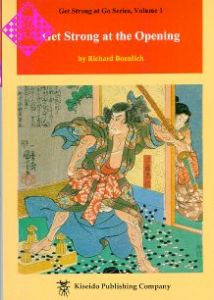 Get Strong at the Opening19,50 €
Get Strong at the Opening19,50 € -
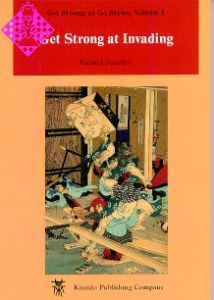 Get Strong at Invading19,50 €
Get Strong at Invading19,50 € -
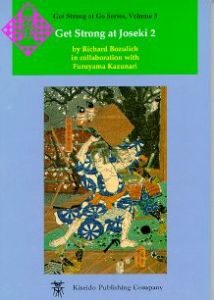 Get Strong at Joseki 219,50 €
Get Strong at Joseki 219,50 € -
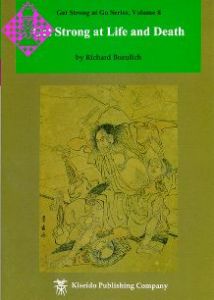 Get Strong at Life and Death19,50 €
Get Strong at Life and Death19,50 € -
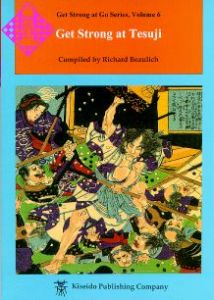 Get Strong at Tesuji19,50 €
Get Strong at Tesuji19,50 € -
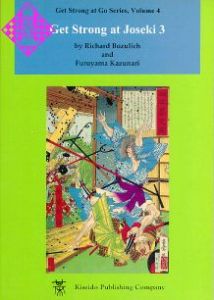 Get Strong at Joseki 319,50 €
Get Strong at Joseki 319,50 € -
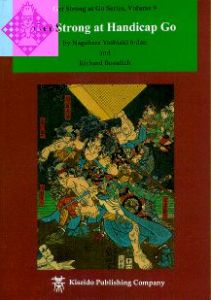 Get Strong at Handicap Go19,50 €
Get Strong at Handicap Go19,50 € - Mehr von Kiseido

